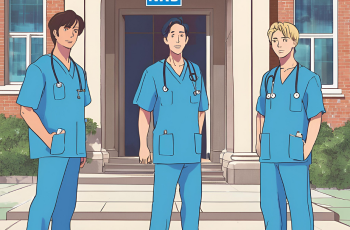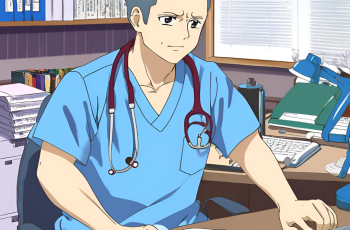The NHS is currently grappling with a severe crisis in its Accident & Emergency (A&E) departments, underscored by alarming statistics. In January, over 60,000 patients waited more than 12 hours in emergency departments, a figure that exceeds the total recorded during the 11 years prior to the COVID-19 pandemic. This situation is not merely a statistic; it represents a healthcare system that is overwhelmed and unable to meet the demands placed upon it.

A&E waiting times have long been a concern, but recent data reveals just how deeply entrenched this problem has become. The phenomenon of “trolley waits,” where patients needing admission are left waiting due to a lack of available hospital beds, has shifted from being a rare occurrence to a distressing new normal. This alarming trend highlights the systemic failures within the healthcare system, which is now stretched beyond its limits.
Despite a slight decrease in overall A&E attendance compared to the previous year, the increasing wait times raise serious questions about the underlying issues plaguing the NHS. NHS England has set a target for 95% of patients to be admitted, transferred, or discharged within four hours of arriving at A&E. However, the latest figures indicate that only 71.1% of patients met this target in January, an improvement from December but still dangerously below the expected standard. The attached graph illustrates the significant decline from previous years, showcasing how far the NHS has fallen from its goals.
The last time the NHS achieved its 95% waiting target was in July 2015, and since then, performance has steadily deteriorated, with waiting times increasing year after year. While the COVID-19 pandemic has undoubtedly exacerbated this crisis, the data indicates that the trend began long before the pandemic struck. The NHS is currently facing a waiting list for routine treatment that stands at approximately 7.46 million people, meaning that 1 in 10 individuals in England is awaiting care. Although there has been a minor reduction in the number of patients waiting over a year for treatment—now at 200,375—this figure remains more than 100 times higher than pre-pandemic levels.
The government may highlight a slight reduction in the overall waiting list as a sign of progress, but this does little to reassure patients who are waiting months, and sometimes years, for essential treatment. Cancer waiting times are particularly concerning, with more than 74,000 patients not receiving timely treatment last year. While the government may celebrate small victories, for those suffering from long waits, these incremental changes are insufficient.
Long waits in A&E are not just a source of frustration; they can have deadly consequences. Every hour spent in an overcrowded emergency department increases the risk of complications, deterioration, and even death. As Dr. Tim Cooksley from the Society for Acute Medicine has pointed out, patients are facing “appalling conditions and prolonged waits” in emergency departments. This crisis is not merely a seasonal issue; it represents an ongoing disaster that shows no signs of abating.
The implications of these figures extend beyond individual patient experiences; they also affect public confidence in the NHS. As more patients encounter long waits and inadequate care, trust in the system erodes. Delayed treatment not only worsens health outcomes but also undermines the credibility of healthcare professionals who are striving to provide care within a broken system. If these issues are not addressed urgently, there is a risk that more patients will turn to private healthcare, further deepening inequalities in access to treatment.
Health and Social Care Secretary Wes Streeting has asserted that the government’s Plan for Change has resulted in a reduction of NHS waiting lists by 160,000 since July 2024, and he promises a new strategy for urgent and emergency care. However, those working on the frontlines recognize that without addressing critical challenges such as bed shortages, social care delays, and chronic understaffing, waiting times will continue to spiral out of control. The backlog in social care means that thousands of medically fit patients cannot be discharged, which keeps hospital beds occupied and prevents A&E admissions from moving through hospitals efficiently.
The crisis in A&E serves as a canary in the coal mine for the NHS as a whole. Emergency care is collapsing under the weight of systemic failures, including GP shortages, insufficient hospital capacity, overwhelmed ambulance services, and an exhausted workforce. Short-term fixes will not resolve these pervasive issues. To prevent unnecessary hospital admissions, the government must invest in workforce retention, expand hospital capacity, and enhance social care support.

The data is clear: the NHS is struggling and failing to deliver timely care. If the fact that more than 60,000 patients waited over 12 hours in A&E does not compel urgent action, it raises the question of what will. The current situation demands immediate and comprehensive reforms to ensure that patients receive the care they need without excessive delays. Addressing the underlying issues within the NHS is critical to restoring public confidence and ensuring that the system can effectively serve the needs of all patients. The time for action is now, as the health and well-being of countless individuals depend on the responsiveness and effectiveness of the NHS in crisis.




